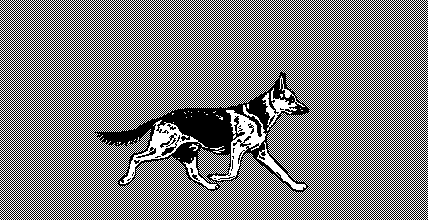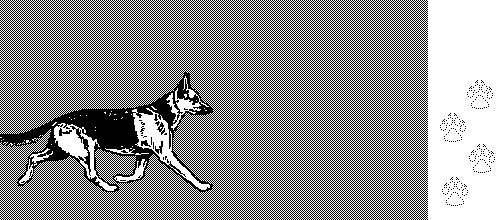A flying
pace is shown in the above cartoon. The step sequence of the pace is shown at the right. The pace is a two-beat gait. The two lateral limbs are used alternately for weight support, i.e., the left forelimb and left hindlimb move in unison, as do both right limbs. The forelimb may cycle slightly earlier than the ipsilateral hindlimb.
A short period of suspension typically intervenes between the alternating phases of lateral support, particularly at increased speed (
flying pace). At slow speeds (
slow pace) the support phases increase in duration and diagonal support patterns may intervene between periods of lateral support (when a contralateral forelimb lands before the ipsilateral limbs lift). The
rack gait is a rapid pace in which the two ipsilateral limbs land separately instead of together, producing a four beat gait. It is a speciality gait of Racking Horses.
The trunk undergoes lateral oscillation in the pace as right and left limbs impact the ground beside a center line. Equilibrium is good with the pace, although the gait is not as stable as the trot. It seems to require less muscular exertion than the trot (less vertical oscillation).
The pace is uncommon among domestic quadrupeds, but it is a good endurance gait. Dogs and other domestic animals generally pace because of fatigue or a physical weakness. Dogs that are obese or out of condition often pace rather than trot. Also, dogs that have problems with interference, may find that it is easier to pace than to crab-run.
Puppies and foals often pace until their muscles are better developed, at which point they switch to the trot. The pace is a natural rapid gait for the camel, giraffe, elephant and bear. Some Standardbred horses pace naturally, others are trained to pace.





